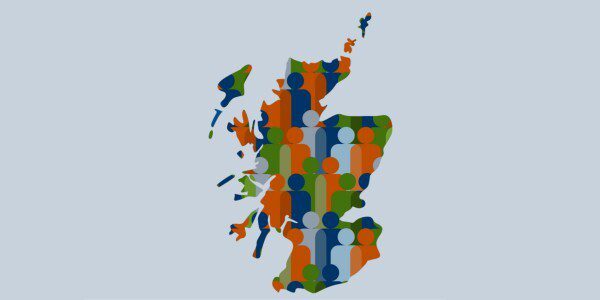
A new report charting the health of people in Scotland over 20 years finds that life expectancy is in reverse while children and disadvantaged communities are worse off.
In the most comprehensive review of health inequalities in Scotland since devolution of powers from Wesminster in 1998, The Health Foundation’s Leave No One Behind independent review finds that the gap in health between the richest and the poorest has grown, driven by a decline in health of the least advantaged areas.
The Health Foundation partially attribute increasing inequalities to stalled progress in living standards with typical household incomes in Scotland remaining on a similar level since before the financial crisis despite rising costs. Their research estimates that people living in the poorest 40 per cent of households are almost eight times as likely to report poor health as the richest 20 per cent. Weekly earnings are around £80 lower per week in 2021 than they would have been had growth continued on the long term upward trend which preceded the 2008 financial crisis. This equates to more than £4,000 per year.
Throughout the 2000s, life expectancy rose steadily as median earnings increased. However, between 2008 and 2012, these trends began to reverse. The report finds links between a worsening social and economic context – the homes and neighbourhoods we live in, local services, and jobs and income – and immediate impacts on people’s health. Deteriorating conditions “exert a growing influence on health over the lifetime,” lead to more years in worse mental and physical health, and can result in an earlier death.
Their analysis explores government data showing a 24-year gap in time spent in good health between those living in the richest and poorest 10 per cent of areas in Scotland, a gap that has increased over the past ten years. Between 2013 and 2019 the gap in life expectancy between people living in the least and most advantaged areas increased by 1 year to 13.3 years for men, and by 1.7 years to 9.8 years for women.
The Health Foundation report finds that since 2000, infant deaths (deaths that occur before the first birthday) have decreased overall in Scotland, but since 2014 rates have risen in the most disadvantaged 20 per cent of areas while dropping in the least disadvantaged 60 per cent. While this may balance out over the total population, it shows a widening inequality between those who face hardship and those who do not. By 2016-2018 infant mortality was 2.6 more likely in children from the most disadvantaged areas.
Trends of inequality continue in the number of people in poverty. While the first decade of the millennium saw a decline in numbers, the rate of relative and extreme poverty has been on the rise over the past five years. Children are especially affected, with an increase of 2 percent to 24 per cent of children in relative poverty between 2017 - 2020, and an increase of 4 per cent to 17 per cent of children in extreme poverty between 2009 and 2020.
A large part of worsening health inequalities is the trend of the richest households maintaining or increasing their income while wages and income for the most disadvantaged households stagnate. The 10 per cent of households with the most wealth in Scotland have a median income of £1.65 million compared with £7,600 for household with the least wealth – over 200 times less. This is similar to the gap across the UK; as of 2018 the richest 20 per cent saw an income increase of 4.7 per cent while the poorest 20 per cent had their income decrease by 1.6 per cent. Amongst these figures, existing trends of inequalities are evident with white people more likely to receive a higher income than other ethnic groups.
The major new study follows several reports from the Health Foundation on health inequalities in Scotland. In their study of socio economic determinants of health in Scotland, they found that the growth in the number of households living in the private rented sector led to worse health and rising inequality due to the higher instances of damp and mould, higher housing costs, and greater rates of cold homes. These caused increased stress and anxiety, loss of sleep, and cardiovascular and respiratory problems.
On canvassing public opinion on health inequalities, the Health Foundation found that while there were conflicting ideas of the causes of health inequalities, ranging from people’s behaviours to their environments and financial situations, there was strong concern about health inequalities and an appetite for greater action to reduce the gap between rich and poor, which was echoed in their research and polling of charities, public, and private sector stakeholders.
The Leave No One Behind report concludes that changing the existing trends in health inequalities is possible. Resources for identifying and acting on changing health outcomes do exist and can be used more effectively, including through collaboration between the government, public and private sectors and the public: “Taking action and making progress is possible and can be achieved within existing powers – and by maximising their use – for a healthier and more equal society. “
